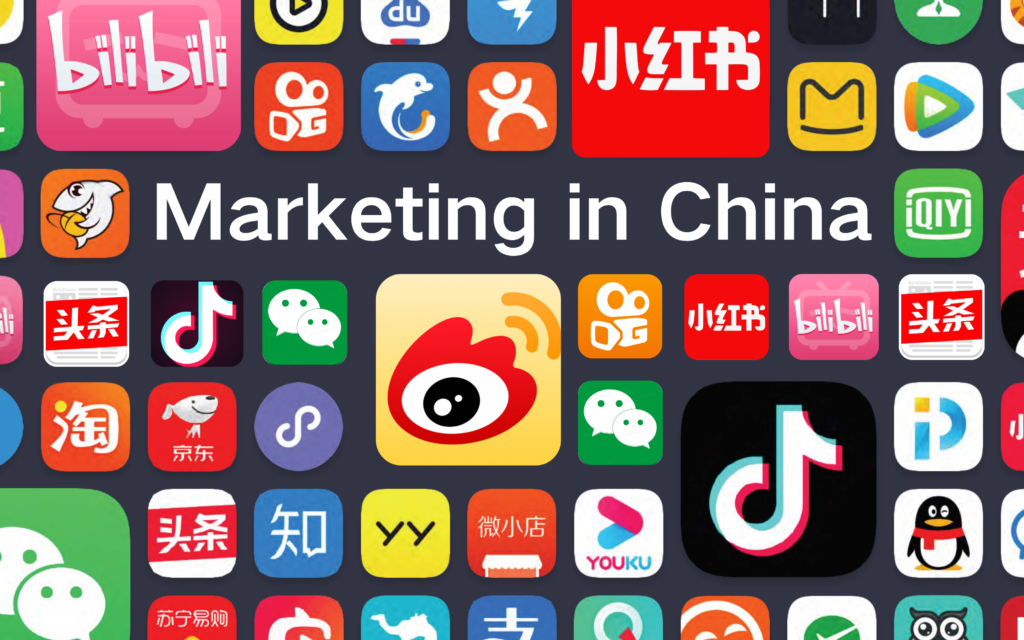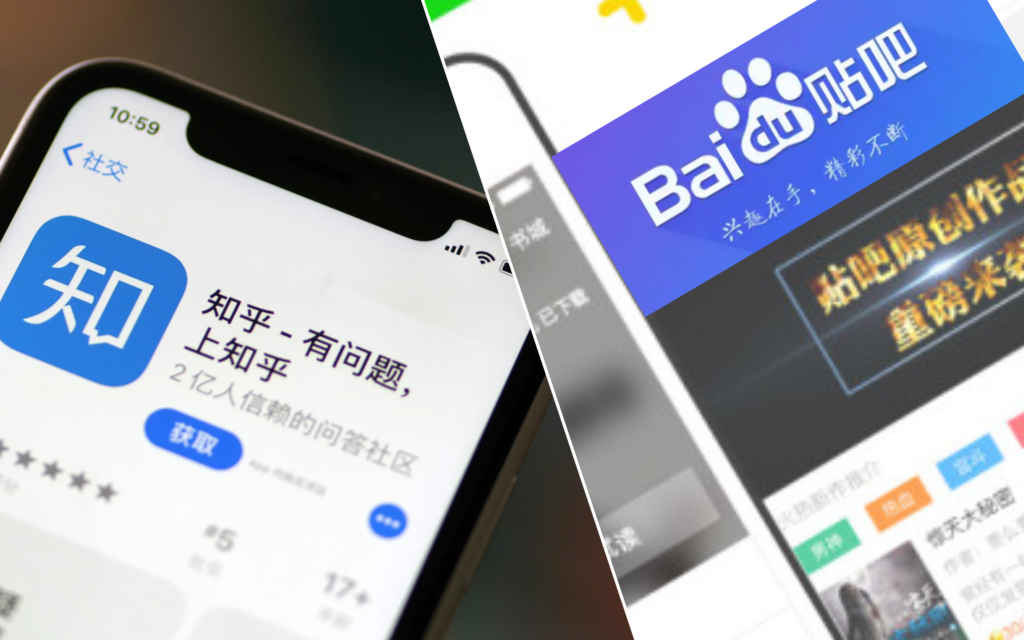
China is a massive market for all industries, thanks to its fascinating technological development. This has made Chinese consumers the most digitalized in the world. Thus, marketing in China is crucial if you want to expand into this market.
In the past decade, numerous global brands have entered China, making it a key growth area. The most important question remains: what marketing in Chinastrategy should you adopt?
Large overseas companies may have an advantage in financial resources. However, both international firms and startups face similar challenges in understanding Chinese consumers and their purchasing behaviors.
Having a marketing plan for China is essential to enter this market without making mistakes that could hinder your success.
China offers enormous growth potential, with a population of 1.4 billion people, making it the most populous country in the world. In ten years, Chinese consumer spending is expected to nearly double, focusing more on services than products.
In this article, we bring you the 7 keys to mastering marketing in China, whether your company is a startup or already established in the Western market.
1. Marketing in China: first steps
Over the past few years, marketing in China has increasingly relied on the Internet. Even during the COVID-19 pandemic, the Chinese economy continued to grow at an incredible rate.
To build a solid business and develop a successful marketing plan in China, brands must design a strategy tailored to this market. This requires a deep understanding of consumer habits and profiles, as well as familiarity with local marketing tools.
When starting your marketing in China strategy, remember that Chinese consumers do not purchase from unknown brands. To ensure your brand is recognized by Chinese consumers, we present the 7 keys to successful marketing in China.

2. 7 Keys to mastering your marketing in China
China is not a homogeneous market; it’s a diverse place with many different cultures. It can almost be seen as the entire European continent. There are seven main dialects spoken across the country, affecting communication styles. Thus, strategies that work in one region may not work in another, even with similar demographics.
In the past, Chinese stores focused on mass-produced products. Now, consumers desire niche brands with personalized attention. Local small businesses can meet this demand by catering specifically to their desires.
Chinese consumers love digital and social media, making marketing in China essential. Online shopping is huge in China, with many people sharing experiences or seeking opinions before purchasing. Therefore, it’s crucial to run digital marketing campaigns to smartly leverage these channels.
If you want your business to be known and master marketing in China, there are 7 keys you need to keep in mind:
1. Have a presence on Chinese social media
China is a market of 1.4 billion people, so there is a huge number of users on social media. However, China has its own social media platforms, such as WeChat, Weibo, Douyin (TikTok in the West), and RedBook, which we will discuss further.
Additionally, Chinese social media users are much more active than in any other country. On average, they spend 5 hours and 50 minutes on the Internet daily, with 2 hours and 12 minutes on social media platforms. This makes a presence on Chinese social media essential for any marketing in China strategy.
WeChat is an essential social commerce platform in China created by Tencent, with over 1.2 billion monthly active users.
Chinese users spend an average of more than 70 minutes a day on the app, making it one of the most popular choices for brands to start social media marketing in China.
WeChat allows for personalized one-on-one interaction between brands and users. On WeChat, brands can create official accounts to share content that enhances brand image, launch mini-programs for greater customer engagement, share videos on the WeChat Channels, communicate directly with customers and advertising in WeChat.

Key Features of WeChat for Marketing
Feature | Description |
Official Accounts | Brands can create these to share articles, updates, and promotions directly with followers. |
Mini Programs | Mini apps within WeChat offering a seamless user experience, enabling interactive engagement. |
WeChat Channels | Allows brands to share short videos to quickly capture user interest. |
Private Traffic Groups | Enables direct communication with customers, fostering a sense of community and loyalty. |
Weibo is one of the most popular sites in China and is often considered the Twitter of China.
Similar to WeChat, Weibo is another key platform that brands commonly use for social media marketing in China.
As of November 2020, Weibo had over 520 million monthly active users and 230 million daily active users, so its important the marketing on Weibo.
Weibo is ideal for making content go viral and for Key Opinion Leaders (KOLs) to build their online communities. Brands can leverage Weibo’s features to engage with a large audience, run promotional campaigns, and enhance brand visibility.

Key Features of Weibo for Marketing:
Feature | Description |
Viral Content Potential | Weibo is perfect for spreading viral content, allowing brands to reach a wide audience quickly. |
KOL Community Building | KOLs can use Weibo to create and nurture their communities, increasing brand influence. |
Large User Base | With millions of active users, Weibo offers extensive reach for marketing in China campaigns. |
By utilizing these features, brands can effectively promote their products and engage with consumers on Weibo.
Little Red Book (Xiaohongshu)

Key Features of Little Red Book for Marketing:
Feature | Description |
Community-Driven Content | Users create and share posts about products, offering authentic reviews and recommendations. |
High User Engagement | With millions of active users and daily posts, the platform is ideal for reaching engaged consumers. |
Seamless E-Commerce Integration | Allows users to purchase products directly through the app, making the buying process straightforward and integrated with social discovery. |
Brands can leverage Little Red Book to tap into consumer trends, build brand credibility, and drive sales through authentic user-generated content and direct e-commerce integration.
Douyin (TikTok in China)
In August 2020, Douyin had over 600 million daily active users, and daily video searches surpassed 400 million.
Marketing and advertising on Douyin offers extensive opportunities for businesses in the Chinese market. Users on Douyin create and share original short-form videos, which are highly effective for audience engagement and viral potential compared to longer videos.

Key Features of Douyin for Marketing:
Feature | Description |
Massive User Base | Over 600 million daily active users provide a vast audience for content. |
High Engagement | Short-form videos are designed for quick consumption and viral sharing, boosting engagement. |
Original Content Creation | Users can produce and distribute creative, original videos, making it a hub for innovative marketing. |
By leveraging Douyin's platform, brands can reach a large, engaged audience, creating viral content that resonates with viewers. This makes Douyin a powerful tool for businesses aiming to expand their presence in China.
2. Focus your strategy on engagement
Once we understand Chinese social media, we can craft a strategy focused on engagement to ensure our marketing in China campaign is successful.
To focus your strategy on engagement, you should:
- Personalize Strategies: Tailor your approach based on user characteristics and behavior to effectively reach and influence key audiences.
- Post at Optimal Times: Publishing content during peak traffic periods maximizes impact. Avoid posting during low-traffic hours to ensure your content gets noticed.
- Optimize Keywords: Use targeted keywords in your social media posts. Chinese platforms like WeChat, Weibo, and Douyin have sophisticated search algorithms that rely on keywords to index and display relevant content.
Implementing these strategies will enhance your campaign’s visibility and effectiveness in the Chinese market.
3. Collaborate with Chinese influencers (KOLs)
Chinese influencers, known as Key Opinion Leaders (KOLs), play a crucial role in shaping your marketing strategy in China. The rise of KOLs has significantly impacted Chinese consumer culture, as many consumers look to them for recommendations.
In the Chinese market, KOLs can be bloggers, celebrities, authorities, or industry professionals with a large following. Their social influence is vast; their posts reach a broad and loyal audience and significantly impact their followers’ purchasing decisions.
Partnering with a trusted KOL agency in China ensures that your brand can effectively identify and collaborate with the most relevant KOL. To streamline this process, many agencies and brands use a China influencer tool to manage influencer discovery, content workflows, and performance tracking across platforms.

How to Collaborate with KOLs:
- Sponsored Content Creation: The most common form of collaboration involves brands identifying a KOL who aligns with their product and positioning. They then negotiate and agree on the creation of promotional articles or posts recommending their products or services.
- Engage Authentically: It’s important to find KOLs who genuinely like and use your products, as authenticity resonates with audiences.
- Leverage their Reach: KOLs have the ability to reach niche markets and provide targeted exposure that traditional advertising might miss.
Partnering with a KOL agency in China could be a strategic option for you, as they can help you connect with the right influencers, professional campaign management, and measurable results in a competitive market.
By leveraging KOL partnerships, brands can enhance their visibility and credibility in the Chinese market.
4. Build a branding strategy adapted to China
China is a vast market with numerous producers, making it challenging for brands to stand out. The legal system for protecting consumers from counterfeit products is still developing, leading to widespread caution among Chinese consumers. Many have been deceived by fake goods and expensive yet low-quality domestic brands.
Chinese consumers buy brands not only for their functions but also to reflect social status. They are willing to pay a premium for brands that confer prestige and respect within their social circles. This has fueled the impressive growth of luxury consumer products in China over the past two decades.

Key considerations for building a brand in China:
- Quality Assurance: Ensure that your products are genuine and of high quality to build trust among consumers wary of counterfeits.
- Prestige and Status: Position your brand as a symbol of social status to attract consumers willing to pay more for prestigious products.
- Cultural Relevance: Tailor your branding to align with Chinese cultural values and consumer behavior for better resonance.
- Consumer Protection: Highlight any measures your brand takes to protect consumers and guarantee product authenticity.
By addressing these factors, brands can build a strong, trusted presence in the Chinese market, attracting discerning consumers and fostering loyalty.
5. Implement a content marketing strategy
A valuable strategy for marketing in China is to leverage the large, active user groups on Chinese social media forums. Forums are still highly regarded in China, with large communities gathering to discuss their favorite topics. For international brands, forums can provide valuable insights into target customers and serve as platforms for executing content strategies to boost brand awareness and image.
Baidu Zhihu
With 94 million monthly active users, Baidu Zhihu offers a wealth of relevant information across various topics, with many Key Opinion Leaders (KOLs) participating in discussions. As with any content marketing platform, it’s essential to provide high-quality content. The Chinese market can absorb a significant amount of content, much more than Europe or the U.S. After publishing, continue to interact with respondents, much like on LinkedIn. However, Chinese users expect faster responses.

Baidu Tieba
With an average of 43 million monthly active users, Baidu Tieba allows users to create forums on any discussion topic. The key features of Baidu Tieba are its highly interactive content and its vertical structure of communities. Posts can vary widely and include discussions, Q&A sessions, personal diaries, or short stories. Interaction is crucial for a post’s success, and each community within Baidu Tieba operates somewhat independently under its own Tieba Host.
6. Dominate Baidu with SEO and SEM
To succeed in your marketing in China strategy, SEO and SEM on Baidu are crucial. Over 80% of Chinese consumers conduct online searches to learn about products or services, making visibility on Baidu essential for driving traffic and generating sales.
Baidu dominates the market share in China, so strong SEO strategies are necessary. However, Baidu prioritizes paid content over organic, making SEM indispensable. Using Baidu Ads can effectively attract more traffic and increase visibility quickly. Unlike Google Ads, Baidu Ads blend more seamlessly with organic search results, and Chinese users are generally more receptive to ads, viewing them positively as sources of product information.
By implementing these strategies, brands can significantly enhance their reach and engagement in the Chinese market.

7. Maximize your reach with social media ad campaigns
Just as a SEM campaign on Baidu can significantly expand your company’s reach, social media ad campaigns can boost your online reputation, increase traffic from Chinese users, sales, and your company’s credibility.
Having a presence on platforms like WeChat and Weibo is essential. Without visibility on these dominant platforms, your brand will lack credibility among Chinese users, hindering success in this market.
Key points for social media ad campaigns:
- Investment: Significant investment is needed for foreign brands to establish a solid presence on all major social media platforms.
- WeChat and Weibo: These platforms are crucial, as brands not visible on WeChat and Weibo are not perceived as important and reputable.
- Target Audience: Social media helps foreign brands reach genuinely interested audiences. The competition is less intense, and marketing costs in China are lower.
Utilizing social media ad campaigns effectively can help foreign brands establish credibility and engage with a broad audience in China, enhancing overall marketing success.
3. Conclusion
Taking the first step in creating a marketing strategy for the Chinese market can be daunting. However, as China’s economy grows and becomes more open to foreign businesses, the benefits of entering this market make the effort worthwhile.
A successful digital marketing campaign goes beyond just meeting KPIs. It requires a strategic and creative approach to turn business objectives into tangible results. Success depends on effective project management and a clear vision centered on the buyer’s journey, your brand’s story, and engagement.
If you need assistance with marketing in China, Influchina can help you develop the best digital marketing strategies for the Chinese market. Contact us at hello@influchina.com or click here.
FAQ
Frequently asked questions about marketing in China
Why is marketing in China crucial for businesses looking to expand?
Marketing in China is crucial because it is a massive market with significant technological development, making Chinese consumers the most digitised in the world. Effective marketing strategies are essential for entering this market successfully and tapping into its enormous growth potential.
What are the main challenges faced by international firms and startups in the Chinese market?
The main challenges include understanding Chinese consumer behavior and purchasing habits. Both large overseas companies and startups struggle with these aspects, which are critical for developing an effective marketing strategy in China.
Why is having a presence on Chinese social media platforms important for marketing in China?
Chinese social media platforms like WeChat, Weibo, Douyin, and Little Red Book are essential because they have a vast number of active users who spend significant time online. Being present on these platforms allows brands to engage directly with Chinese consumers and build brand recognition.
How can collaborating with Key Opinion Leaders (KOLs) benefit a brand's marketing strategy in China?
Collaborating with KOLs can enhance a brand’s visibility and credibility. KOLs have a broad and loyal following, and their recommendations significantly influence consumer purchasing decisions. Authentic engagement with KOLs helps brands reach niche markets and provides targeted exposure.
What role does SEO and SEM on Baidu play in a successful marketing strategy in China?
SEO and SEM on Baidu are crucial because Baidu dominates the search engine market in China. Over 80% of Chinese consumers use online searches to learn about products or services. Strong SEO strategies and Baidu Ads help increase visibility, drive traffic, and generate sales.

